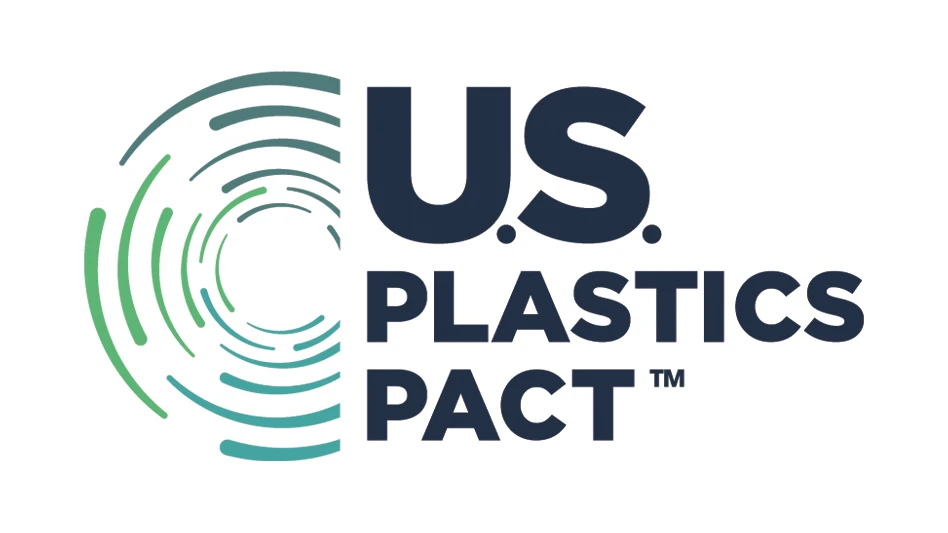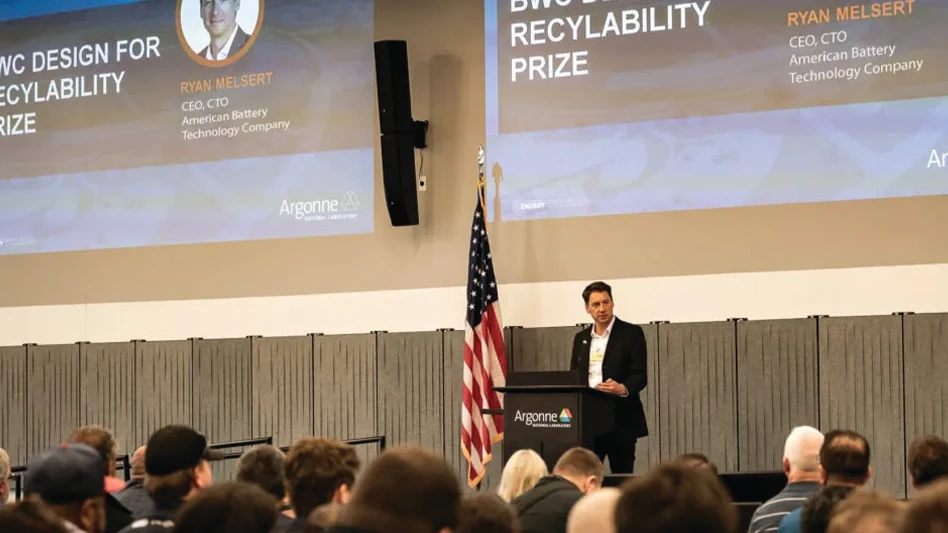
Image courtesy of U.S. Plastics Pact
The U.S. Plastics Pact, Pittsburgh, has released its 2023-2024 Impact Report, highlighting what it calls significant strides toward a circular economy for plastics while also calling for stronger collaboration across industries, governments and consumers.
The organization says its report notes the achievements of its 135 members, or “Activators,” and emphasizes the urgency of unified federal action, public-private partnerships and personal responsibility in addressing the complexities of plastics sustainability.
RELATED: US Plastics Pact issues recyclability guidelines
According to the organization, the report showcases progress in the Pact’s efforts to transform how plastics are designed, used and reused. It says 22 percent of its members do not sell any items from its Problematic and Unnecessary Materials List, with ongoing progress through 2025. Additionally, sustainable packaging adoption increased to 50 percent, up from 36 percent in 2021, with improvements in recyclability. The Pact says its members also raised recycled content in their packaging to 11 percent, progressing toward the 2025 goal of 30 percent.
The U.S. Plastics Pact says these achievements align with its 2025 targets and its recently introduced Roadmap 2.0, which extends some goals to 2030 and prioritizes scalable reuse systems, the elimination of virgin plastics and advanced recycling infrastructure.
Pact members are delivering solutions across the supply chain, the organization says, including:
- Pact Collective: addressing hard-to-recycle packaging and plastic scrap in the beauty industry, Pact Collective introduced NewMatter resin, a 100 percent recycled-content material fostering scalable closed-loop systems.
- Eastman: Leveraging molecular recycling, the company opened what it claims is the world’s largest facility of its kind in Tennessee, reducing emissions and diverting hard-to-recycle plastics from landfills.
- Trioworld: The company introduced 49ga Axis Loop film, a thinner-high-performance machine stretch film containing 30 percent recycled content, cutting the amount of plastic used by up to 40 percent and halving carbon emissions.
- Kraft Heinz: The company transitioned its Crystal Light packaging from plastic to recyclable paperboard, eliminating 3 million pounds of plastic annually and advancing toward a 20 percent reduction in virgin plastic use by 2030.
The report calls for cohesive national policies to advance circularity, including standardized recycling definitions, extended producer responsibility (EPR) programs and updated recycling data, and says federal action is crucial for scaling the infrastructure needed to achieve the Pact’s targets.
“We cannot manage what we do not measure,” Pact CEO Jonathan Quinn says. “Businesses and governments need clear, consistent data and cohesive policies to guide investment and innovation. Federal leadership is essential to achieving a circular economy for plastics.”
While pointing out that regulatory action is critical, the Pact says achieving a circular economy also require collective responsibility and “bold action.”
“Every individual and organization has a role to play,” Quinn says. “From the products we choose to the systems we design, we must act with urgency to ensure plastics remain an asset, not a liability. By working together—through personal responsibility, public-private collaboration and innovation—we can drive change and strengthen America’s competitiveness in the global circular economy.”
Latest from Recycling Today
- Reconomy adding digital product passport service to textile EPR solution
- PRE warns EU’s plastics sector at a crossroads
- Electra, Interfer to partner on low-carbon iron for green steel production
- Nucor sees slimmer profits in Q4
- Vinyl Sustainability Council adds metals recycling firm
- Ecomaine targets multifamily recycling collection
- Mack Trucks partners with LEGO on EV truck building set
- Radius publishes FY24 sustainability report





